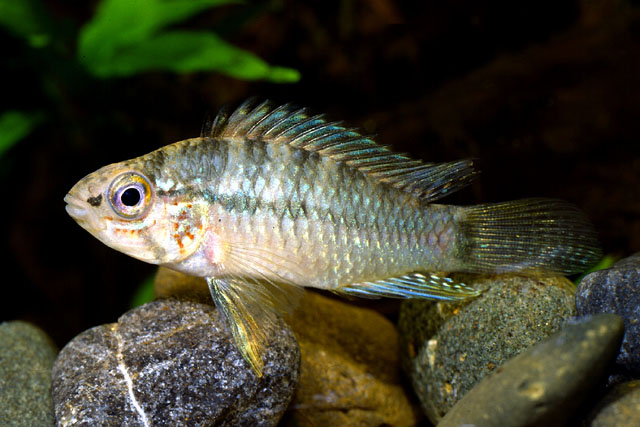| Cichlidae (Cichlids), subfamily: Geophaginae |
| 3.8 cm SL (male/unsexed); 4 cm (female) |
|
benthopelagic; freshwater; pH range: 6.5 - 7; dH range: 10 |
| South America: Amazon River basin, in the Guaporé River drainage in Bolivia; Paraná River basin, in the upper Paraguay River basin. |
|
This species is similar to A. commbrae in having a dark tail spot which includes the last vertical bar on the body and a caudal spot. The species' lateral band ends in the sixth vertical bar rather than in the tail spot; abdominal stripes appear as traces or are absent, rather than as conspicuous spots along the abdominal sides or short vertical stripes below the anterior part of the lateral band; specimens examined have 15 rather than 16 dorsal spines; posteromedial teeth on the lower pharyngeal tooth-plate bear two small projections on the rostral edge (Ref. 86502). |
| Maximum length is 7.0 cm TL (Ref. 12251). This fish is a cave spawner in which the male has a harem (Ref. 12251). Female clutch tender, but male often takes part in caring for eggs and larvae (Ref. 47893). |
|
Not Evaluated (N.E.) Ref. (130435)
|
| harmless |
|
Source and more info: www.fishbase.org. For personal, classroom, and other internal use only. Not for publication.

